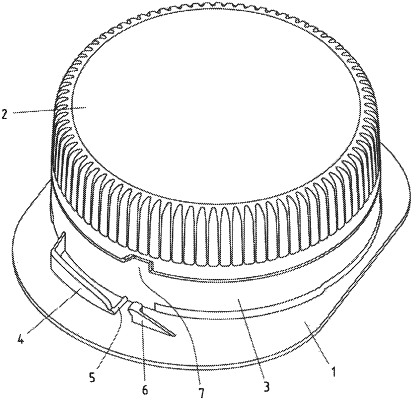| CPC B65D 5/748 (2013.01) [B65D 41/3409 (2013.01); B65D 2401/15 (2020.05)] | 18 Claims |

|
1. A resealable pouring element for cardboard/plastic composite packages, in particular beverage packages, with a base element having a circumferential fastening flange as well as an external thread, with opening means arranged at least in an unopened state of the pouring element in an interior of the base element and with a screw cap with internal thread, wherein the opening means are designed such that when a composite package is initially opened by unscrewing the screw cap, the opening means breaks a composite material of the package or a barrier layer located in the base element, a pour opening is created inside the pouring element and wherein at least one tamper-evident seal is arranged between the base element and the screw cap,
wherein an anchor ring is arranged below the screw cap and is connected to the screw cap via a hinge in a rotationally fixed manner and in that the tamper-evident seal consists of an indicating element, whose one end is fixedly connected to the anchor ring or the screw cap and in which the other end is connected to the anchor ring by means of a predetermined breaking point in such manner that the predetermined breaking point of at least one mandrel element arranged on the fastening flange is broken when the screw cap is unscrewed and thus indicates to the consumer that an initial opening has already taken place.
|